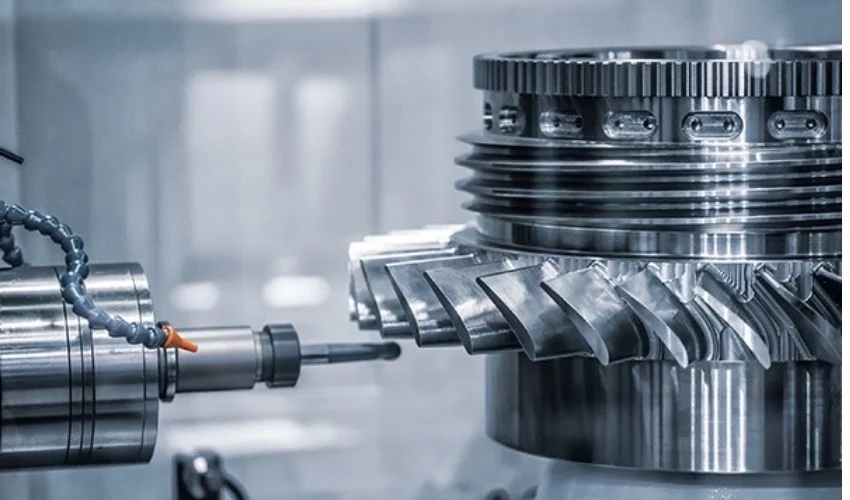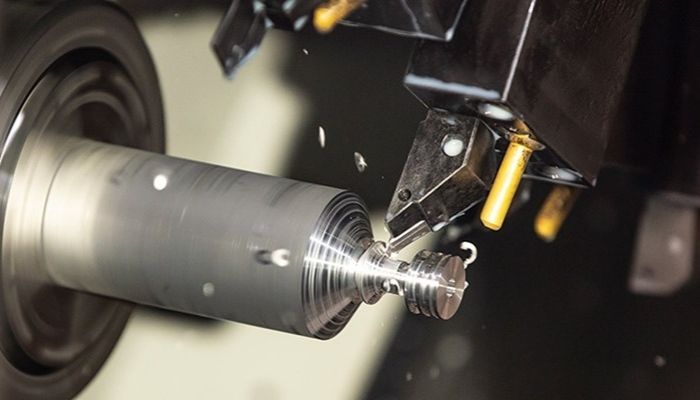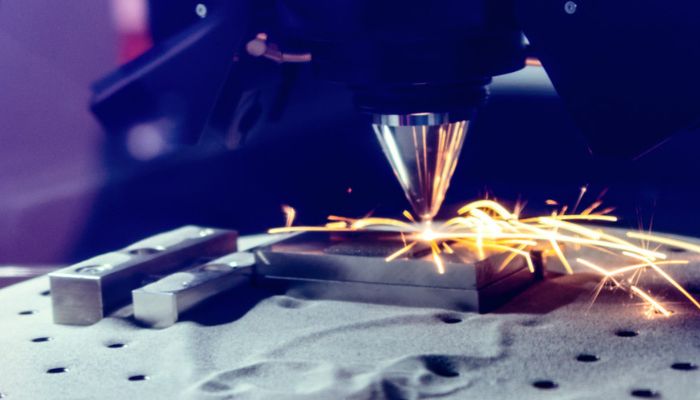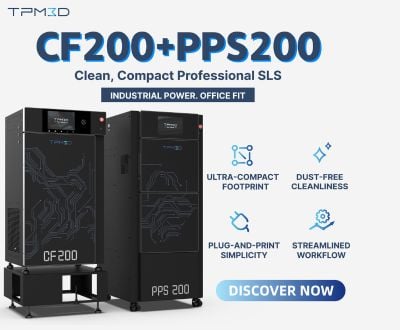Additive and Subtractive Manufacturing: Complementary or Rivals?

While more and more companies are opting for additive manufacturing, subtractive manufacturing is still the most widely used method in industry. Meanwhile, 3D printing is currently mainly used to complement subtractive manufacturing methods. However, as the name suggests, unlike additive manufacturing, these techniques consist of removing material to produce a part of the desired size. They are now deployed in many industries, such as aeronautics, automotive, metallurgy, etc. We took a closer look at the differences between subtractive and additive manufacturing as well as how they can be used to complement each other.
To start, it is important to know that just like additive manufacturing and its multiple processes, many subtractive manufacturing methods exist – you’ve probably heard for example the term “CNC machining.” An acronym for Computer Numerical Control, it covers material removal techniques based on a digital program that controls the machine tools. We are talking about drilling, turning, milling or boring. CNC machining is now compatible with a wide range of materials, from plastics to metals. That being said, not all subtractive manufacturing techniques use a numerical program, further down we will cover some of the most popular cutting methods as well.

Photo Credits: Protolabs
What is CNC Machining?
CNC machining includes several processes; we will start with turning and boring. These processes use a moving part on a rotating axis. The energy required to machine the part is provided by the movement of the part itself. These methods make it possible to manufacture any parts that are modeled by rotation. In concrete terms, it is a 2D drawing that is replicated ad infinitum along an axis of rotation, thus forming a 3D model. Despite their different names, turning and boring are very similar since they both use the same principle. The main difference is that boring works on the inside of the part while turning works on the outside. Allowing the design of parts from wood, metals and certain plastics, turning and boring machines are now present in many industries, such as the automotive, aerospace, medical or even decor sectors.
Let’s move on to another technique, milling. Because of its precision, its ability to create parts with internal cavities and its ability to machine a part, milling is a real asset in manufacturing processes. This technique uses milling cutters to cut material laterally. This means that when the cutter is in the material, it can move perpendicularly and remove material along its path. Milling is compatible with many materials thanks to a variety of interchangeable tools adapted to various tasks and materials. Nevertheless, this method has some drawbacks that can make it difficult to access. For example, the machining of a part is often divided into several steps/operations and these require regular tool changes.

The milling process
Drilling and milling use very similar tools, but should not be confused. Drilling is only used to make round holes with a drill bit. While milling offers greater freedom of manufacture, especially thanks to the possibility of making holes or shapes of a larger diameter than its own, drilling allows you to drill holes of a diameter equal to that of the drill. Despite its many advantages, milling is much slower than drilling when it comes to making holes, which is why drilling is better suited to making several of the same cuts in a row. While CNC machining encompasses many techniques, subtractive manufacturing is not limited to these. Other methods, such as cutting, are also used by many industries.
Different Cutting Techniques
While some use laser cutting, such as the automotive manufacturing industry that uses a laser to produce precise parts such as brake pads, others opt for EDM. Also known as EDM, for Electrical Discharge Machining, this technique comes in 3 forms: wire EDM, sinker EDM and rapid drilling, which differs from conventional drilling in its ability to make thinner, deeper holes using an electrode. While these different methods are relatively slow, they are distinguished from the others by their precision. EDM uses electrical discharges to manufacture parts from conductive materials.
In addition to electrical discharge machining, laser cutting is also used. With this technology, a laser with a power of several hundred watts can cut several materials quickly and precisely – for example, parts up to 1 mm² with a tolerance of plus or minus 20 microns. In addition to cutting, laser machines are also capable of engraving. Laser cutters come in two forms: CO2 lasers and fiber lasers, which are used for cutting and engraving metals. Despite their advantages, laser cutters have some disadvantages; when operating such these machines, harmful fumes can be released. In addition, since lasers cut material by heat, the lasers themselves can overheat. It is therefore necessary to cool them, which often requires additional machines.
Finally, among the main subtractive manufacturing processes and more specifically cutting, we find water jet cutting. This process is based on the use of a water jet, accompanied by an abrasive, which strikes the surface of the material at high speed. This causes the material to shrink and separate to form the desired final shape. A high pressure compressor is required to generate this water jet. The nature of the jet and the material in question will influence the depth and speed of the cut. This technique is popular in the aerospace, automotive and mechanical industries. It offers high precision, compatibility with many materials and, unlike various subtractive processes, it is not harmful. While other processes generate chips, dust or smoke, water jet cutting eliminates all these wastes since the water jet carries them away in its path.

The water jet cutting process (photo credits: Fogepack Systèmes)
Disadvantages and Advantages Compared to Additive Manufacturing
As previously stated, the main advantage of subtractive manufacturing techniques is probably their ability to offer high dimensional accuracy. Unlike most 3D printing processes that rely on heat to operate, subtractive manufacturing allows parts to be built at room temperature, thus avoiding dimensional accuracy problems related to the working (shrinkage) of materials. To ensure dimensional accuracy in subtractive manufacturing, the environment must be controlled. For example, if you want to design a part from a block of steel, it is mandatory to bring the material into the room where the cutting will take place at least 3 days beforehand, otherwise it will change dimension (work) according to temperature and humidity.
Subtractive manufacturing processes also benefit from a wider range of compatible materials. Compared to 3D printing, where it is necessary to have several printers based on different processes if you want to use different materials, it is possible to create metal, plastic or wood parts on the same machine.

Subtractive manufacturing offers high dimensional accuracy
However, subtractive manufacturing processes have significant drawbacks. First of all, in contrast to 3D printing, the different production methods leave behind large amounts of waste, whereas additive manufacturing is attractive because it uses only the amount of material needed. In machining, for example, chips and other dust must be removed during the manufacturing process to limit the amount of excess material that can interfere with the cutting process. In addition to the dust generated by subtractive manufacturing, it is also possible that the smoke generated by the process can be very harmful to the operators, which is very common when using a laser or EDM process.
In addition, subtractive manufacturing does not offer the same manufacturing freedom as 3D printing – a one-shot printable part will sometimes require multiple operations, the use of different machines, and splitting into multiple parts to be assembled to be replicated by subtractive manufacturing. Finally, it is more difficult to achieve complex geometries with material removal processes. Additive manufacturing allows more freedom in the design process. In other words, the designer will not have to worry about the constraints imposed by the machine tools used and will therefore be able to let his imagination run free, not being limited by the manufacturing capacities.
How Are Subtractive and Additive Manufacturing Complementary?
If the two technologies are regularly posited as rivals, they have, for the moment, very distinct applications. And that is why they are mostly used in a complementary way. Since the beginning of its strong growth, 3D printing is most often used for prototyping purposes. Because of the benefits they offer, 3D technologies allow for the rapid and low-cost manufacture of multiple parts and therefore offer the possibility of different iterations. Once the shape, materials and parts have been determined, it is possible to mass-produce them using subtractive manufacturing methods. Several processes, such as laser cutting and water jet cutting, allow for the design of a large number of parts in a short period of time. However, other methods, such as CNC machining, can be very time consuming. This technique requires an important programming step as well as an almost necessary human presence. Today, CNC machining is mainly used in the manufacture of injection molds, a formative manufacturing technique.
Moreover, while subtractive manufacturing allows for the repair of objects, 3D printing offers more possibilities in this area. One example is the directed energy deposition (DED) process, which can be used to repair metal parts without having to change them. In concrete terms, the technology is capable of adding material to an existing part, thus avoiding the need to make assemblies or replace large parts unnecessarily. More globally, 3D technologies allow to reproduce parts that are faulty or worn out by time, all on demand and in small series. Instead of throwing away, users can repair their parts and minimize their environmental impact.

DED technology allows parts to be repaired (photo credits: AdvancedPowders)
Despite their differences and processes, subtractive and additive manufacturing often go hand in hand. Because of their respective characteristics, these two types of manufacturing complement each other, allowing the rapid creation of precise parts never before imagined. In order to combine these manufacturing techniques, some consortium projects have been created, such as the Hybrid Advanced Manufacturing – Integrating Technologies organization, which aims to offer companies the design freedom of additive manufacturing and the precision of subtractive manufacturing.
What do you think about subtractive manufacturing? How do you think it compares to additive manufacturing? Let us know in a comment below or on our LinkedIn, Facebook, and Twitter pages! Don’t forget to sign up for our free weekly Newsletter here, the latest 3D printing news straight to your inbox! You can also find all our videos on our YouTube channel.
*Cover Photo Credits: Turcon








Thank you very much for your indepth expositions on the advantages and disadvantages of Subtractive and Additive manufacturing techniques. I truly enjoyed and benefited from the article. Kudos!